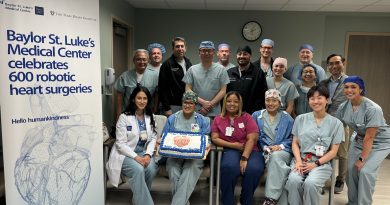How hand surgery can save you from a lot of pain

In today’s fast-paced world, our hands are essential tools for almost everything we do. Whether it’s typing on a keyboard, gripping a steering wheel, or simply holding a cup of coffee, our hands bear the brunt of our daily activities. However, when pain strikes, particularly in the form of carpal tunnel syndrome, these everyday tasks can become excruciating. Thankfully, hand surgery offers a solution that can alleviate this pain and restore functionality to your hands.
Carpal tunnel syndrome is a common condition that affects millions of people worldwide. It occurs when the median nerve, which runs from the forearm into the palm of the hand, becomes compressed or squeezed at the wrist. This compression leads to pain, numbness, tingling and weakness in the hand and fingers, often making simple tasks challenging and uncomfortable.
For many individuals suffering from severe or persistent carpal tunnel syndrome, hand surgery may be the most effective treatment option. “Carpal tunnel release can provide long-term relief from pain and discomfort associated with carpal tunnel syndrome, allowing patients to regain full use of their hands and improve their quality of life,” said Dr. Christine Yin, assistant professor in the Michael E. DeBakey Department of Surgery and Baylor Medicine plastic surgeon. “In fact, studies have shown that up to 90% of patients experience significant improvement in symptoms following carpal tunnel surgery.”
Traditionally, there are two ways to perform carpal tunnel release: the open and the endoscopic methods. The traditional open method involves a 5-7 cm incision along the palm of your hand to visualize and release the ligament. The skin is closed with absorbable sutures. This requires at least three to four weeks of lifting restrictions.
The endoscopic method, however, requires only a 1 cm incision in the wrist. The ligament is visualized with a camera and the transverse carpal ligament is released from the inside, without making a large skin incision. This allows patients to return to work – even heavy lifting – within two days of surgery.
Both methods have equivalent long-term outcomes, but many people who cannot take too much time off work or activity prefer the endoscopic method.
To better understand how hand surgery can alleviate the pain of carpal tunnel syndrome, let’s take a closer look at the procedure:
- Anesthesia: The surgery is typically performed under local anesthesia with gentle sedation, meaning you will be awake or gently asleep, but your hand will be numbed to prevent any discomfort.
- Incision: The surgeon makes a small incision in the palm of the hand or wrist to access the carpal tunnel.
- Release of the transverse carpal ligament: The surgeon carefully cuts the transverse carpal ligament, relieving pressure on the median nerve.
- Closure: The incision is closed with stitches, and a bandage is applied to protect the surgical site.
Following the surgery, patients can expect a relatively quick recovery. Most individuals can return to light activities within a few days and resume normal activities within a few weeks. Physical therapy may be recommended to help regain strength and mobility in the hand, but it is usually not required.
If you’re experiencing persistent pain, numbness or tingling in your hands, don’t suffer in silence. Call 713-798-6141 to make a consultation appointment with Yin. Hand surgery, particularly for conditions like carpal tunnel syndrome, can offer significant relief and improve your quality of life.
By Tiffany Harston, communications associate with the Michael E. DeBakey Department of Surgery



